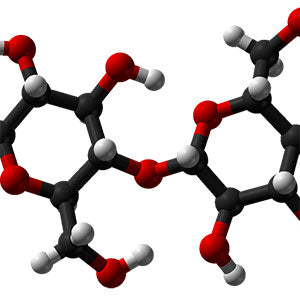Beta-Glucan Analysis and the Seven Pillars of Immunity

Currently, there seems to be a lot of confusion about beta-glucans and their contribution to the beneficial properties of mushrooms. In order to shed more light on the subject, Paul Stamets has written a new article, "Beta-Glucan Analysis and the Seven Pillars of Immunity".
Q: Why don’t you list beta-glucan content on your products?
A: Because we want to be accurate. The testing methods used to determine beta-glucan content are highly inaccurate.
Over the years, Fungi Perfecti LLC has spent thousands of dollars on product testing for beta-glucan content at various laboratories. The reported beta-glucan values from several independent laboratories vary greatly even though identical assays were performed. The most commonly employed assays for determination of beta-glucan content can only detect soluble beta-glucans; the insoluble beta-glucans remain undetected. Beta-glucans differ in their solubilities depending on their size, functionality, and interaction with other molecules. In agreement with other organic chemists specializing in beta-glucan analysis, we have concluded that the currently employed methods are unreliable! Deciding to place a percentage on our labels gives us sufficient pause, as we know each methodology and each laboratory would yield a different result. There is no standard, accepted, validated methodology in the industry. This fact makes us reluctant to make any such claims on our product labels, and makes any purported beta glucan levels listed for any mushroom product dubious.
Analytical laboratories have admitted that some mushroom companies use chitinase to convert otherwise water-insoluble sugars (chitin) into beta-glucans so their analyses falsely meet their desired marketing goal; a technique that simply embellishes the beta-glucan content in order to mislead the customer. Another trick some companies employ is to use beta-glucans isolated from yeast, such as Saccharomyces cerevisiae and list them as ‘mushroom beta-glucans’ on their product label—more than a bit of a stretch of logic, truth and reason. Yeasts are the simplest forms of fungi: many yeasts do not form mycelium and lack the cellular complexity of higher fungi, The other, non-beta-glucan constituents embedded into the cellular architecture of mushroom mycelium distinguishes the immunological activity of mushrooms from yeasts..
Here at Fungi Perfecti, we are addressing this problem. Dr. Regan Nally, who directs our chemical analytical division, is leading this research effort by writing for publication an article for peer-reviewed journal exploring numerous inaccuracies in beta-glucan analyses.
So I ask: what would you do? What is the scientifically accurate and ethical response? If you had one identical product tested at several laboratories but whose results ranged from Non Detectable to 40%, which would you put on the label? This is why Fungi Perfecti is different: if we are not confident in the scientific method being used by the industry, we refuse to pass on what we consider to be misinformation.
The immune system is activated multifactorially by many components in mushrooms. Beta-glucans are just one. Other constituents include but are not limited to alpha-glucans, ergothioneines, antioxidants, sterols, lipids, glycosides, and mycoflavonoids—many of which work synergistically to optimize health. The efficacy of a multi-constituent approach has been positively confirmed in the scientific literature. Many of these active ingredients are not water soluble, meaning that they are not pulled out by hot water extraction. The inclusion of these beneficial co-ingredients enhances their protective effects. These constellations of complementary constituents are the foundation of our Host Defense mushroom product line.
For educational purposes only. © 2013 Paul E. Stamets and Fungi Perfecti, LLC, All rights reserved.
